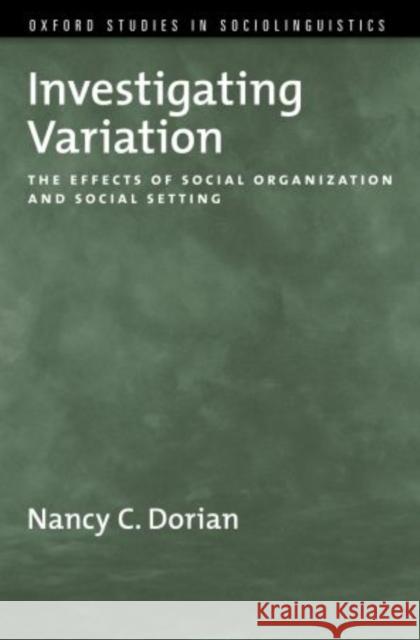Investigating Variation: The Effects of Social Organization and Social Setting » książka
Investigating Variation: The Effects of Social Organization and Social Setting
ISBN-13: 9780195385922 / Angielski / Miękka / 2010 / 376 str.
Investigating Variation: The Effects of Social Organization and Social Setting
ISBN-13: 9780195385922 / Angielski / Miękka / 2010 / 376 str.
(netto: 220,72 VAT: 5%)
Najniższa cena z 30 dni: 224,65
ok. 30 dni roboczych
Dostawa w 2026 r.
Darmowa dostawa!
Linguistic variation has been studied primarily in communities with the dominant social organization of our time: ethnic diversity, socioeconomic stratification, and a population size that precludes community-wide face-to-face interaction. In such communities variation correlates with ethnicity and class. Investigating Variation explores a different kind of social structure: small size, dense kinship ties, common occupation, and absence of social stratification. In the community investigated here, social homogeneity and constant face-to-face interaction made accommodation unnecessary, and extremely weak extra-community norming for the local minority language permitted a very high level of individual variation.
Nancy C. Dorian's examination of the fisherfolk Gaelic spoken in a Highland Scottish village offers a number of explanations for delayed recognition of a linguistic variation unrelated to social class or other social sub-groupings. Reports of similar variation phenomena in locations with similar features (contemporary minority-language pockets in Ireland, Russia, Norway, Canada, and Cameroon) make it possible to identify a particular set of factors that contribute to the emergence and persistence of socially neutral inter-speaker and intra-speaker variation. Facets of language use related to social structure remain to be investigated in communities with still other forms of social organization before the few communities that represent them disappear altogether.










